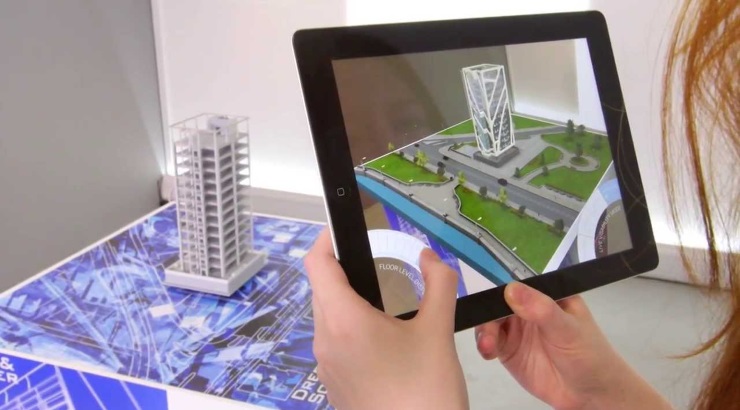Innovation
10 Construction Technology Trends to Watch in 2025
Ten construction technology trends that will shape 2024.

In the past few years, many interesting trends have emerged in the construction technology field as stakeholders respond to the dynamics of the building sector.
From the Internet of Things (IoT) and advanced analytics tools to 3D printing and robotics, new construction technology trends are gradually changing the industry.
Here are ten construction technology trends that will shape 2025.
Construction technology trends
1. 3D printing
Since 2004 when Professor Behrokh Khoshnevis of the University of South Carolina tried to deliver the first 3D printed wall, innovations in this segment have grown exponentially and it is now possible to create a house in a day.
The ability to 3D-print complex structures, both small and large, has endeared the technology to property developers seeking to improve work efficiency while cutting labour costs and construction timelines.
This has made 3D printing one of the hottest construction technology trends, with the 3D printing construction market expected to record a compound annual growth rate of as high as 91.5% from 2021-2028.
2. IoT and advanced analytics tools
IoT is a technology that uses sensors and systems to collect data from multiple connected devices in real time.
Such data can help builders quickly identify safety issues and rectify them swiftly to ensure construction work proceeds safely as planned.
On the other hand, advanced analytics tools can track and evaluate the current situation on a construction site and provide timely warnings of potential risks.
These tools are helpful when working on dangerous construction sites.
3. Robotics
Robots are increasingly finding their way into sites as builders seek ways to circumvent the labour crunch currently facing the global construction industry.
By introducing robotics to sites, builders can automate repetitive tasks such as bricklaying and rebar tying as robots can easily complete these tasks.
This can help relieve workers of the burden of handling repetitive work.
And since robots can work without stopping, construction work can be completed much faster as compared to the timelines that can be achieved by human workers.
4. Green construction
Green construction refers to the use of energy-efficient technologies and innovative products that leave less carbon footprint on the planet.
This allows the construction of sustainable buildings that consume less energy and are significantly cheaper to maintain. It also helps to make buildings more durable.
Indeed, as cities fight the ‘urban heat island’ condition where towns have higher temperatures than rural areas due to lack of greenery, green building is slowly becoming compulsory in many parts of the world.
5. Wearables
Wearables such as exoskeletons, smart helmets, and safety vests are emerging as one of the hottest construction technology trends.
These devices can monitor the movements of workers, provide real-time data on site conditions, and prevent common injuries such as back strain.
Wearables are likely to become a standard feature in the construction industry as builders seek to enhance worker safety while improving productivity.
6. Augmented reality
Augmented reality (AR) is a technology that enhances reality by overlaying digital information on top of a user’s view thus creating a mixed reality experience.
AR is transforming construction by enabling architects, engineers, and site workers to visualize building plans in real-time – helping them to better understand a project while improving communication between stakeholders.
By streamlining the construction process, AR is helping builders to reduce construction errors and accidents while improving productivity.
7. Virtual reality
Virtual reality (VR) is a technology that creates a computer-generated simulation of an environment that can be experienced through a head-mounted device.
It allows a user to interact with and navigate a virtual world designed to replicate real-world experiences or create entirely new world experiences.
RELATED: 10 Construction Industry Trends to Watch
VR is quickly becoming a part of the preconstruction process, with architects and engineers using it to visualize and modify designs in real-time.
This allows for faster and more accurate decision-making.
Both AR and VR can potentially change the way we design and build structures.
8. 5D BIM
Defined as a digital representation of physical and functional characteristics of a building, Building Information Modeling (BIM) forms a reliable basis for decisions during a building’s life-cycle – from its earliest conception to demolition.
It extends the three primary spatial dimensions (width, height, and depth) – to include time (4D BIM), cost (5D BIM), asset management, sustainability, etc.
RELATED: How 5G Will Transform Construction Sites
Currently one of the hottest construction industry technology trends, BIM is helping builders to form collaborative processes relating to the built asset from initial planning through to construction and then throughout its operational life.
9. AI-oriented drones
Drones armed with cameras have been used for ages to collect data from places that cannot be accessed by humans.
Thanks to technology, drones are nowadays AI-oriented and fitted with cameras that can capture better images and details that improve communication between them and software on the receiving end.
RELATED: OpenSpace: The ‘Google Street View’ of Construction
Drones are now offering real-time aerial imagery, 3D lidar scans, BIM capabilities, progress tracking, safety monitoring, inspections, and more.
This is helping site managers and engineers to make more informed decisions and to better understand the project’s progression.
10. Offsite construction
Offsite construction is one of the fastest-growing construction technology trends. It involves construction of building components in a factory setting, and transportation of the same to a construction site for assembly.
This mode of construction helps to reduce the wastage of building materials.
Other benefits of offsite construction include improved quality control and shorter construction timelines.
By allowing for greater precision in design and assembly, offsite construction results in higher-quality finished products. However, this technique requires specific and highly trained construction workers, which may slow down its uptake among small-scale builders.














